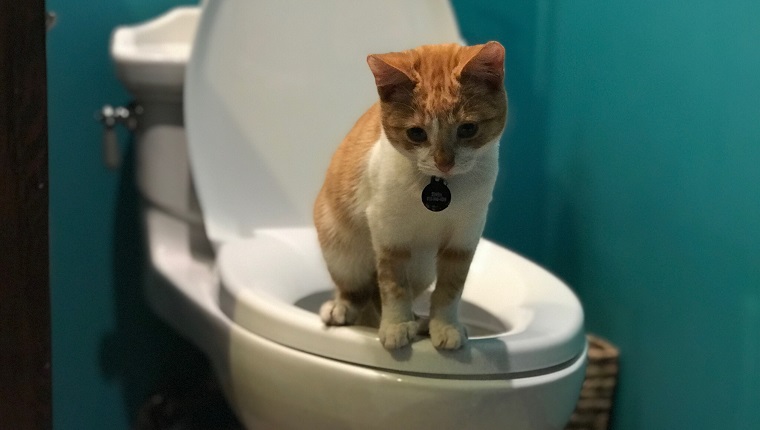The Risks of Flushing Cat Poop in Your Toilet - Preventive Steps
The Risks of Flushing Cat Poop in Your Toilet - Preventive Steps
Blog Article
Everyone has their private ideas involving Don’t flush cat feces down the toilet.

Intro
As feline proprietors, it's vital to be mindful of exactly how we dispose of our feline pals' waste. While it might seem convenient to purge cat poop down the bathroom, this practice can have harmful repercussions for both the atmosphere and human health.
Alternatives to Flushing
Luckily, there are safer and more accountable means to get rid of feline poop. Consider the complying with alternatives:
1. Scoop and Dispose in Trash
One of the most common method of disposing of cat poop is to scoop it into a naturally degradable bag and toss it in the garbage. Be sure to use a specialized trash inside story and take care of the waste without delay.
2. Use Biodegradable Litter
Opt for eco-friendly feline litter made from materials such as corn or wheat. These clutters are eco-friendly and can be safely gotten rid of in the trash.
3. Bury in the Yard
If you have a backyard, think about hiding pet cat waste in an assigned location far from veggie yards and water sources. Be sure to dig deep sufficient to avoid contamination of groundwater.
4. Set Up a Pet Waste Disposal System
Buy a pet dog garbage disposal system specifically created for feline waste. These systems use enzymes to break down the waste, lowering odor and ecological influence.
Health and wellness Risks
In addition to environmental concerns, flushing pet cat waste can also position health and wellness threats to humans. Cat feces may consist of Toxoplasma gondii, a bloodsucker that can create toxoplasmosis-- a potentially severe ailment, specifically for pregnant ladies and individuals with weakened immune systems.
Environmental Impact
Purging pet cat poop presents dangerous pathogens and parasites right into the water system, posing a substantial danger to aquatic ecological communities. These contaminants can negatively influence aquatic life and compromise water quality.
Conclusion
Accountable family pet ownership prolongs past supplying food and sanctuary-- it additionally includes appropriate waste administration. By refraining from flushing cat poop down the toilet and opting for alternative disposal approaches, we can decrease our environmental footprint and protect human wellness.
Why Can’t I Flush Cat Poop?
It Spreads a Parasite
Cats are frequently infected with a parasite called toxoplasma gondii. The parasite causes an infection called toxoplasmosis. It is usually harmless to cats. The parasite only uses cat poop as a host for its eggs. Otherwise, the cat’s immune system usually keeps the infection at low enough levels to maintain its own health. But it does not stop the develop of eggs. These eggs are tiny and surprisingly tough. They may survive for a year before they begin to grow. But that’s the problem.
Our wastewater system is not designed to deal with toxoplasmosis eggs. Instead, most eggs will flush from your toilet into sewers and wastewater management plants. After the sewage is treated for many other harmful things in it, it is typically released into local rivers, lakes, or oceans. Here, the toxoplasmosis eggs can find new hosts, including starfish, crabs, otters, and many other wildlife. For many, this is a significant risk to their health. Toxoplasmosis can also end up infecting water sources that are important for agriculture, which means our deer, pigs, and sheep can get infected too.
Is There Risk to Humans?
There can be a risk to human life from flushing cat poop down the toilet. If you do so, the parasites from your cat’s poop can end up in shellfish, game animals, or livestock. If this meat is then served raw or undercooked, the people who eat it can get sick.
In fact, according to the CDC, 40 million people in the United States are infected with toxoplasma gondii. They get it from exposure to infected seafood, or from some kind of cat poop contamination, like drinking from a stream that is contaminated or touching anything that has come into contact with cat poop. That includes just cleaning a cat litter box.
Most people who get infected with these parasites will not develop any symptoms. However, for pregnant women or for those with compromised immune systems, the parasite can cause severe health problems.
How to Handle Cat Poop
The best way to handle cat poop is actually to clean the box more often. The eggs that the parasite sheds will not become active until one to five days after the cat poops. That means that if you clean daily, you’re much less likely to come into direct contact with infectious eggs.
That said, always dispose of cat poop in the garbage and not down the toilet. Wash your hands before and after you clean the litter box, and bring the bag of poop right outside to your garbage bins.
https://trenchlesssolutionsusa.com/why-cant-i-flush-cat-poop/

Do you really like reading up on Can You Flush Cat Poop Down The Toilet?? Try leaving a review down the page. We'd be pleased to listen to your feelings about this write-up. In hopes to see you back again later on. Make sure you take the opportunity to distribute this entry if you enjoyed reading it. Many thanks for taking the time to read it.
Rates Report this page